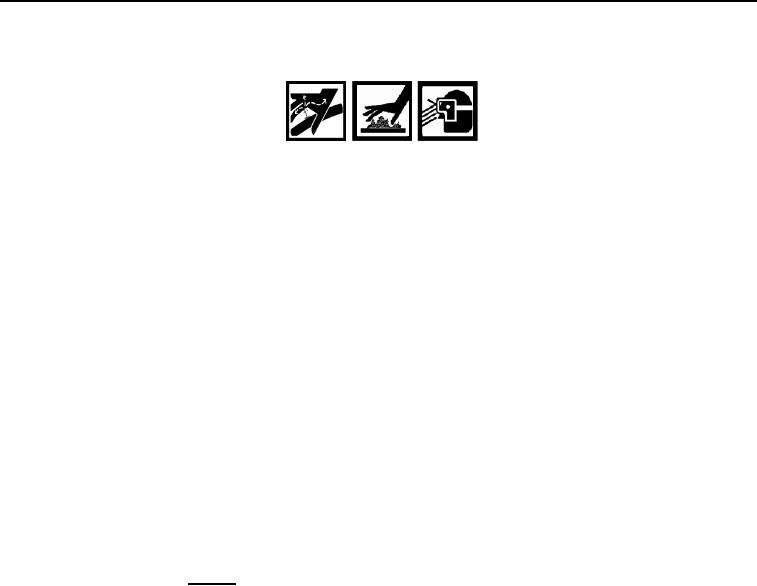
TM 5-2410-240-23-3
0282
RELIEVING HYDRAULIC SYSTEM PRESSURE
0282
WARN I N G
DO NOT disconnect or remove any hydraulicsystem line or fitting unless engine is shut
down and hydraulic system pressure has been relieved. Tighten all connections before
applying pressure. Escaping hydraulic fluid under pressure can penetrate the skin.
At operating temperature, hydraulic oil is hot.Allow hydraulic oil to cool before removing
any hydraulic fitting.
Wear protective eye covering and gloves.
Sudden movement of the machine can cause injury to personnel on or near the machine.
Failure to follow these warnings may result in injury or death to personnel.
C AU T I O N
When servicing this machine, performing maintenance, or disposing of hazardous
materials, consult your unit/local hazardous waste disposal center or safety office for local
regulatory guidance. If further information is needed, please contact the Army
Environmental Hotline at 1-800-872-3845.
1. Park machine on a smooth, level surface.
2. Place steering control lever in NEUTRAL position.
3. Lower attachments to ground.
4. Engage parking brake.
5. Shut down engine.
6. Turn key to ON position without starting engine.
7. Verify that implement shutoff control is not activated.
8. Move control levers through the full range of travel several times. This will relieve any pressure that may be
present in the implement hydraulic system.
9. Slowly loosen hydraulic tank filler cap and allow any pressure to escape.
10. Tighten filler cap on hydraulic tank.
11. Hydraulic system has now been released, and lines or components can be removed.
END OF TASK
GENERAL INFORMATION
0282
1. Before beginning a task, find out how much repair, modification, or replacement is needed to fix equipment as
described in this manual. Sometimes the reason for equipment failure can be seen right away and complete
teardown is not necessary. Disassemble equipment only as far as is necessary to repair or replace damaged
or broken parts.
2. All tags and forms attached to the equipment must be checked to learn the reason for removal from service.
Check all Modification Work Orders (MWOs) and Technical Bulletins (TBs) for equipment changes and
updates.
3. In some cases, a part may be damaged by removal. If a part appears to be good, and other parts behind it are
not defective, leave it on and continue the procedure. Here are a few simple rules:
0282-3

